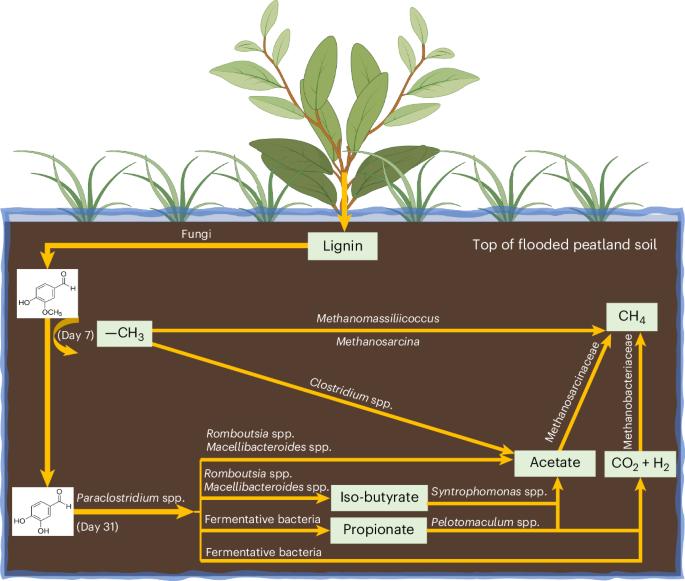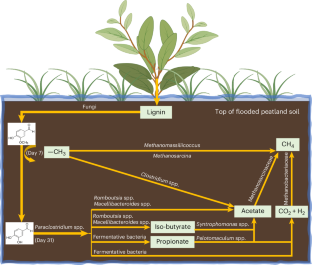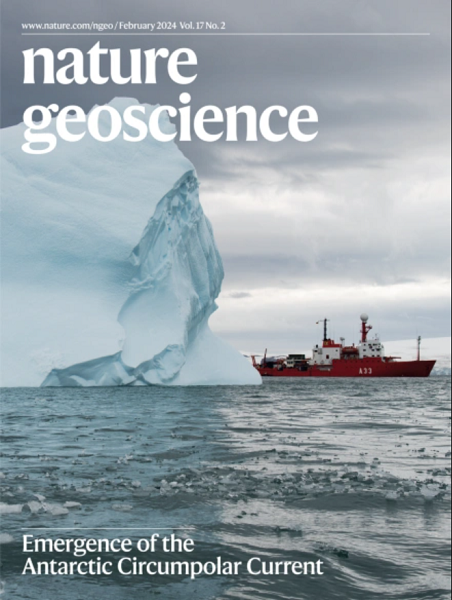木质素是缺氧生态系统中被忽视的甲烷源
IF 16.1
1区 地球科学
Q1 GEOSCIENCES, MULTIDISCIPLINARY
引用次数: 0
摘要
木质素和构成这种聚合物的单酚类物质促进了缺氧生态系统中甲烷的产生,估计占泥炭地甲烷排放量的1.2-14.2%。甲氧基可由产甲烷菌直接转化为甲烷。因此,由于灌木入侵而增加的木质素输入泥炭地将释放比以前认为的更多的甲烷。本文章由计算机程序翻译,如有差异,请以英文原文为准。


Lignin is an overlooked methane source in anoxic ecosystems
Lignin and the monophenols that constitute this polymer promote methane production in anoxic ecosystems, contributing an estimated 1.2–14.2% of methane emissions in peatland. The methoxy group can be directly converted to methane by methanogens. Consequently, increased lignin input to peatland from shrub encroachment would release more methane than previously thought.
求助全文
通过发布文献求助,成功后即可免费获取论文全文。
去求助
来源期刊

Nature Geoscience
地学-地球科学综合
CiteScore
26.70
自引率
1.60%
发文量
187
审稿时长
3.3 months
期刊介绍:
Nature Geoscience is a monthly interdisciplinary journal that gathers top-tier research spanning Earth Sciences and related fields.
The journal covers all geoscience disciplines, including fieldwork, modeling, and theoretical studies.
Topics include atmospheric science, biogeochemistry, climate science, geobiology, geochemistry, geoinformatics, remote sensing, geology, geomagnetism, paleomagnetism, geomorphology, geophysics, glaciology, hydrology, limnology, mineralogy, oceanography, paleontology, paleoclimatology, paleoceanography, petrology, planetary science, seismology, space physics, tectonics, and volcanology.
Nature Geoscience upholds its commitment to publishing significant, high-quality Earth Sciences research through fair, rapid, and rigorous peer review, overseen by a team of full-time professional editors.
 求助内容:
求助内容: 应助结果提醒方式:
应助结果提醒方式:


